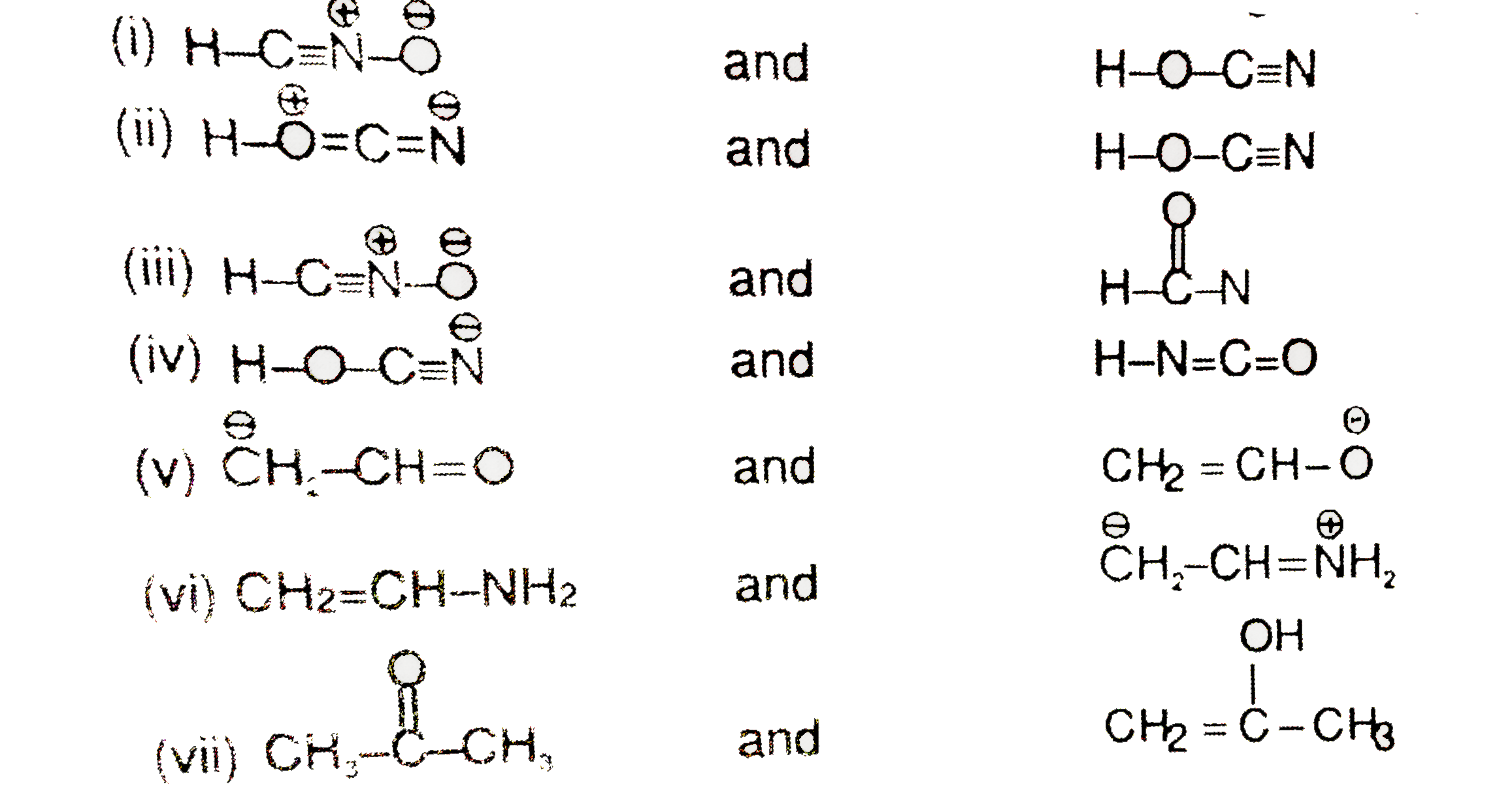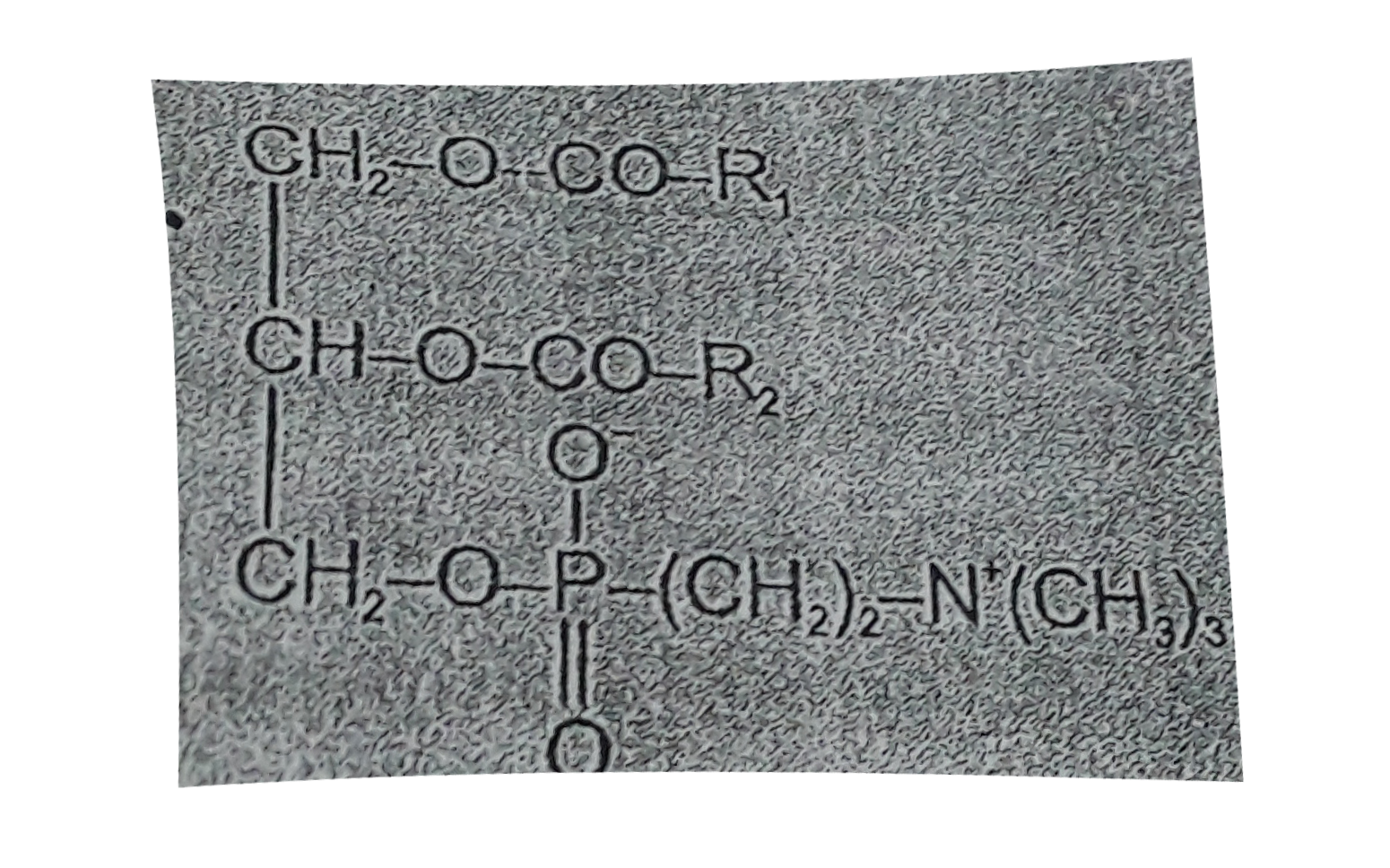Among the given sets, which represents the resonating structures ?
H−C≡+N−..O..:−andH−..O..−C≡N:
H−+O..=C..N:−andH−..O..−C≡N:
H−C≡+N−..−O..:andH−:O:∣∣C−..N:
H−..O..−C≡N:−andH−..N=C=..O:
The correct Answer is:B
To determine which of the given sets represents resonating structures, we need to understand the concept of resonance in organic chemistry. Resonance occurs when there are multiple valid Lewis structures for a molecule that differ only in the arrangement of electrons, particularly pi electrons or lone pairs, while the positions of the atoms remain unchanged.
1. Identify Resonating Structures:
- Resonating structures must have the same arrangement of atoms but differ in the placement of electrons (specifically pi electrons or lone pairs).
2. Examine Each Set:
- Set 1: Check if the structures differ only in electron placement.
- In this set, the structures have different bonding arrangements (O-H vs. C-H), indicating they are different compounds, not resonating structures.
- Set 2: Analyze the structures for electron movement.
- Here, we have H-O⁺ and C≡N⁻. The negative charge can move to form a double bond between C and O, while the triple bond remains intact. This indicates that these structures can interconvert by the movement of electrons, thus they are resonating structures.
- Set 3: Check for validity of resonance.
- The structures in this set show a negative charge moving, but they result in a different compound due to the change in bonding (C-O bond appears in one structure but not in the other). Hence, they are not resonating structures.
- Set 4: Analyze the changes in bonds.
- In this case, while there is some movement of electrons, the resulting structure does not maintain the same connectivity of atoms, indicating they are different compounds, not resonating structures.
3. Conclusion:
- After examining all sets, only Set 2 represents valid resonating structures, as they maintain the same arrangement of atoms while differing in electron placement.
Final Answer:
The correct answer is Set 2.
---
- Resonating structures must have the same arrangement of atoms but differ in the placement of electrons (specifically pi electrons or lone pairs).
- Set 1: Check if the structures differ only in electron placement.
- In this set, the structures have different bonding arrangements (O-H vs. C-H), indicating they are different compounds, not resonating structures.
- Set 2: Analyze the structures for electron movement.
- Here, we have H-O⁺ and C≡N⁻. The negative charge can move to form a double bond between C and O, while the triple bond remains intact. This indicates that these structures can interconvert by the movement of electrons, thus they are resonating structures.
- Set 3: Check for validity of resonance.
- The structures in this set show a negative charge moving, but they result in a different compound due to the change in bonding (C-O bond appears in one structure but not in the other). Hence, they are not resonating structures.
- Set 4: Analyze the changes in bonds.
- In this case, while there is some movement of electrons, the resulting structure does not maintain the same connectivity of atoms, indicating they are different compounds, not resonating structures.
- After examining all sets, only Set 2 represents valid resonating structures, as they maintain the same arrangement of atoms while differing in electron placement.
The correct answer is Set 2.
Similar Questions
Knowledge Check
- Question 1 - Select One
Which will be least stable resonating structure?
ACH2=CH−⊕CH−өCH−O−CH3BөH2−⊕H−CH=CH−OCH3C⊕H2−CH=CH−CH=⊕O−CH3DCH2=CH−өCH−CH=⊕O−CH3 - Question 2 - Select One
Which of the following does not represent resonating structure of ?
 A
A B
B C
C D
D
- Question 3 - Select One
Which of the following represents resonating structure of
 A
A B
B C
C DAll of these
DAll of these
The most stable resonating structure is
View SolutionAmong the given sets, how many of the following not represents the resonating structure :
 View Solution
View SolutionWhich of the following pairs represents resonating structures ?
View SolutionAmongst the given structures , which are permissible resonance forms ?
View SolutionAmong the following structures, the one which is not a resonating structure of others is :

 View Solution
View Solution



